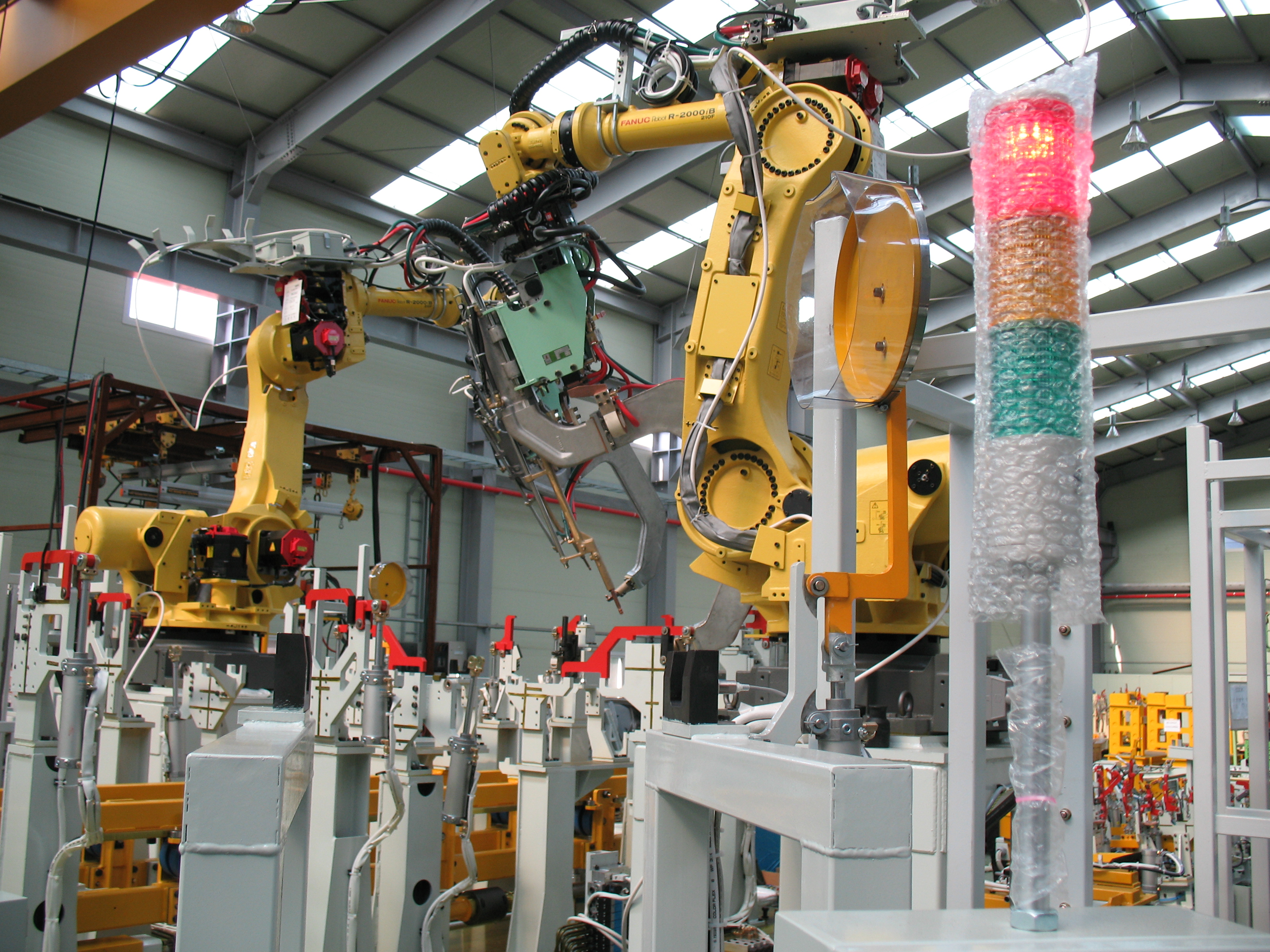Read more in
Search This Blog
Monday, November 30, 2015
Clouds and the Connected Car
Here we are, nearly at the end of 2015, and we still don't have flying cars. But what we do have are connected cars, and that technological advance has the potential to yield all new insights and solutions. Thanks to the combination of connected cars, analytic engines and the cloud, real-time data and real-time solutions are now possible.
Read more in
Read more in
Thursday, November 5, 2015
Hurdles & Headways for Cloud Adoption
 |
| https://en.wikipedia.org/wiki/Cloud_computing |
Cloud computing offers clear benefits in terms of efficiency, function and cost, which is why most organizations are already using cloud services or planning to do so in the near future. However, cloud hurdles like security remain top of mind for many verticals such as healthcare.
While Cisco predicts cloud usage will quadruple by 2019, as we saw in Cisco's Cloudy Forecast, some organizations and sectors are still holding back. The question is: What is keeping them back? (See Cisco's Cloudy Forecast.)
To gain insight into the current hurdles and headways of cloud adoption, The New IP spoke with Sarah Lahav, CEO of SysAid Technologies, and John Grady, senior manager of product marketing for XO Communications Inc. Although both agree that security is the primary concern for organizations that have yet to adopt the cloud, there are other factors at play, as well.
Read more in
Cloud Hurdles & Headways
Wednesday, November 4, 2015
Relatable robots
Advancements in robotics are not just about developing better robots to do work on their own. It’s about developing robots whose work is interacting with humans. Those robots have to be programmed with personality, which is not one-size-fits-all project.
The ideal robot companion for humans is not quite perfect. That’s the conclusion of PhD researcher Mriganka Biswas, supervised by Dr John Murray, from the University of Lincoln’s School of Computer Science who presented their findings the International Conference on Intelligent Robots and Systems (IROS) conference in Hamburg this October, as reported in WT VOX.: "A companion robot needs to be friendly and have the ability to recognise users’ emotions and needs, and act accordingly. Despite this, robots used in previous research have lacked human characteristics so that users cannot relate -- how can we interact with something that is more perfect than we are?”
The good news is that it is possible to program robots to come across as more human. As the French company Aldebaran has discovered in developing culture-specific programming for humanoid robots in conjunction with its parent company, Softbank, what people would want for their humanoid robot varies, according to cultural expectations. That’s what it’s working on in developing the robot Pepper for international markets.
The controlling idea for developing a companion robot like Pepper is interaction. On one level, the robot acts like Siri on wheels. It has the ability to tap into the Internet to answer questions about the weather or local entertainment offerings. Beyond recognizing your voice and responding to what you ask, Pepper is equipped with built-in cameras and sensors that enable it to analyze facial expressions and body language to identify what a person is feeling.
Pepper communicates to humans through eye movements, what appears on the tablet it wears, and speech. What Pepper says can be neutral, playful, or didactic. Which of those three should be the default depends on the expectations of the humans around, and that’s where specialized programming comes in.
Read more in
Our Robots, Our Selves
Monday, November 2, 2015
A cloudy forecast
 |
| from Cisco's Global Cloud Index report) |
Cloud usage is set to quadruple by the year 2019 due to the demands of IoT, business processes and mobile applications, according to Cisco's fifth annual Global Cloud Index, which the company released this week. The forecast also predicts a huge surge in cloud service usage.
Indeed, "enterprise and government organizations are moving from test cloud environments to trusting clouds with their mission-critical workloads. At the same time, consumers continue to expect on-demand, anytime access to their content and services nearly everywhere," said Doug Webster, Cisco's vice president of service provider marketing, in a press release for theCisco Global Cloud Index (2014-2019).
read more in Cisco's Cloudy Forecast
Wednesday, October 21, 2015
Ho hum, another hack
Hacking is so common today that even major data breaches may be filed under the "hack du jour," but what's the answer -- laws and stronger penalties, threat-intelligence sharing or sharing responsibility across the business all the way to the top?
Read more in
Read more in
Tuesday, October 6, 2015
Smartphones are key for hotel rollout
In the future, hotel keys may be regarded as quaint, as guests will open doors with their own smartphones.
On August 11, Hilton Worldwide added a new feature to its Hilton HHonors app, the Digital Key. The hotel anticipates rolling it out to 250 Hilton properties in 2016, a brand that includes Waldorf Astoria, Contrad, and Canopy. The hotel chain had already offered digital check-in, but this allows guests to use their phones not only to reserve and register their rooms but to open them, eliminating the need to stop at the front desk altogether.
Hilton is not the first chain to enable guests to use their smartphones as their room keys. The option has been offered at select locations of hotels chains, like Starwood. It’s a growing trend, according to Robert Cole, founder and CEO of RockCheetah, a hotel and destination marketing strategy and travel technology consulting practice. Cole anticipates a lot more hotels will adopt keyless entry options in the next few years. I spoke to him about the benefits that keyless systems offer the hotel industry.
Read more in
Smartphones Open Doors, Literally
Tuesday, September 22, 2015
Iot enables JIT
"Fast, good, or cheap; pick two." That used to be the motto for manufacturing, as the
reality was you'd have to compromise on at least one of the three. However, today's technological advances like drones and 3D printing combined with advanced data collection make the inventory strategy of Just-In-Time (JIT) inventory more feasible than ever before. As a result, manufacturers now have the possibility of making their supply chains fast, good, and cheap.
"This is nothing less than a paradigm shift in industry: the real manufacturing world is converging with the digital manufacturing world to enable organizations to digitally plan and project the entire lifecycle of products and production facilities," observed Helmuth Ludwig, CEO, Siemens Industry Sector, North America.
Read more in
 |
| https://upload.wikimedia.org/wikipedia/commons/7/7e/Manufacturing_equipment_095.jpg |
Read more in
JIT: The Promise of Emerging Tech for Electronics Manufacturing
Monday, September 21, 2015
A Wakeup Call for the Industry
It's the stuff of nightmares. You're driving a car but can't control it. You try to brake, but it refuses to stop. That's the scenario that Andy Greenberg vividly described in his article, "Hackers Remotely Kill a Jeep on the Highway—With Me in It."
The article went viral and finally got the public's attention about what the pair of researchers behind it—Dr. Charlie Miller from Twitter security and Chris Valasek, director of the Vehicle Security Research—have been trying to get across for years....
The suit against Chrysler and Harman points out that Miller and Valasek had alerted the companies to the vulnerability ahead of time, so they knowingly passed on a potentially dangerous product to customers. The danger is not "unique" (as Harman put it) to Chrysler or even to infotainment systems.
Another publicized car hack hit the news last month. University of California computer security professor Stefan Savage's research team demonstrated a successful hack of a Corvette through SMS messages. You can see it at work in this brief video.
Friday, September 18, 2015
A game-changer for football
Many brands boast of being “The official… of the NFL.” This season, a technology company called Zebra claims a more unique position. It’s the Official On-Field Player-Tracking Provider of the National Football League.
With this partnership between the technology company and the NFL, the game played between the New England Patriots and the Pittsburgh Steelers last night represents more than just a season opener; it was a game-changer.
The September 10 game represented a first for fan access to Next Gen Stats” in real time. While the NFL has used Zebra information from thousands of plays over the past couple of years, the information was retained internally or shared for broadcast. This was the first game to make it directly accessible to fans through the NFL app for Microsoft's Xbox One.
Read more in
A Data-Driven Game-Changer for Football
Thursday, August 27, 2015
The trust factor for IoT
 |
| pic from https://farm8.staticflickr.com/7296/15768208714_9f9376cc7d_o_d.jpg |
We talk a lot about IoT, referring of course, to the Internet of Things. But perhaps we should be thinking of making the T stand for trust. That’s what some are working on now in establishing industry standards to be worth of trust by committing to adopt best practices.
Essentially the OTA's best practices and standards boil down to two overarching considerations. One: Device manufacturers have to consider how they will secure the data collected on their devices. Two: The consumer has to be clearly informed about the nature and extent of the data collected. Having that information allows the potential purchaser to know exactly what they would be getting into with the Internet of Things (IoT) device, and whether or not they consider the gains are worth the risk. Having a universal standard also makes it clear how one company compares to another with respect to data privacy and security.
Read more in
Tuesday, August 25, 2015
Mapping the supply chain for greater sustainability
Like the Rome of old, a more transparent and sustainable supply chain is not built in a day. Building it takes planning, mapping, and fine-tuning. Data visualization enables organizations to bridge all three.
Awareness of the need for sustainability and transparency in the electronic supply chain is rising. And a number of companies have said they are committed to improving in those areas, whether in response to questions about components of their supply chain, like conflict minerals, or as a positive choice whendefining the company's mission.
Read more in
Mapping Out a Better Electronics Supply Chain
Thursday, August 20, 2015
3 signs you're doing social media wrong
This is not an exhaustive list. It was inspired by a quick look at a company profile on Google +. I used to follow that company but just stopped because it clearly is not paying attention to its own posts. It was guilty of all 3 of these:
1. You only post self-promotion and nothing else.
2. You don't respond to any of the comments on your posts, including those with direct questions.
3. You have one guy post "Thanks a lot, [profile name]" on each post, which just makes it look like you hired someone not very bright to comment.
In other words, #DoingItWrong
If you have any other signs of doing social media wrong, please write them in the comments!
Tuesday, August 18, 2015
What would Spock do?
 |
| from https://lurentis.com/blog/driverless-cars-pandoras-box-now-wheels/ |
Is there an ethical algoirthm for driverless cars
These are the types of questions that bring ethics specialists and engineers together in addressing the challenge of directing driverless cars.
Does Spock offer a solution to the problem? He may, if people would accept Vulcan logic. Learn more in
Driverless Cars Present Ethical Challenges
Subscribe to:
Posts (Atom)
-
Depositphotos Nearly every day, we hear about new advances in AI that enable new ways to monitor activities and people, transforming m...
-
en.wikipedia.org No, Edison didn’t invent search engine optimization. But he did make a habit of tinkering around until he found what...
-
Bridge near Bear Mountain, photo by Ariella Brown I saw the title in my email and knew I really shouldn't click it, but my curiosity go...




